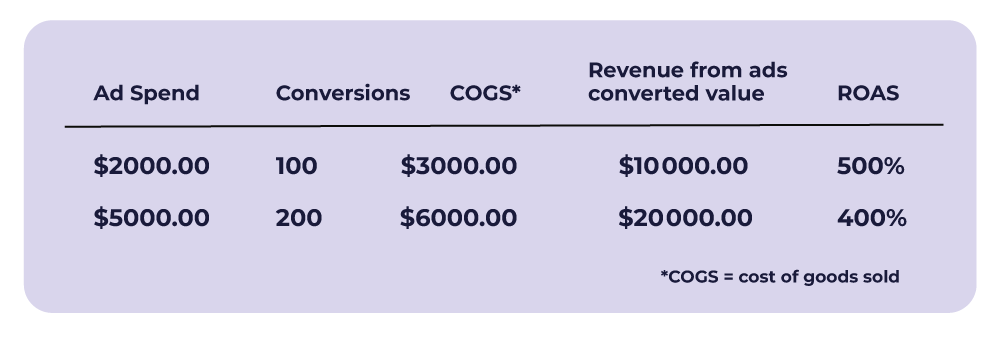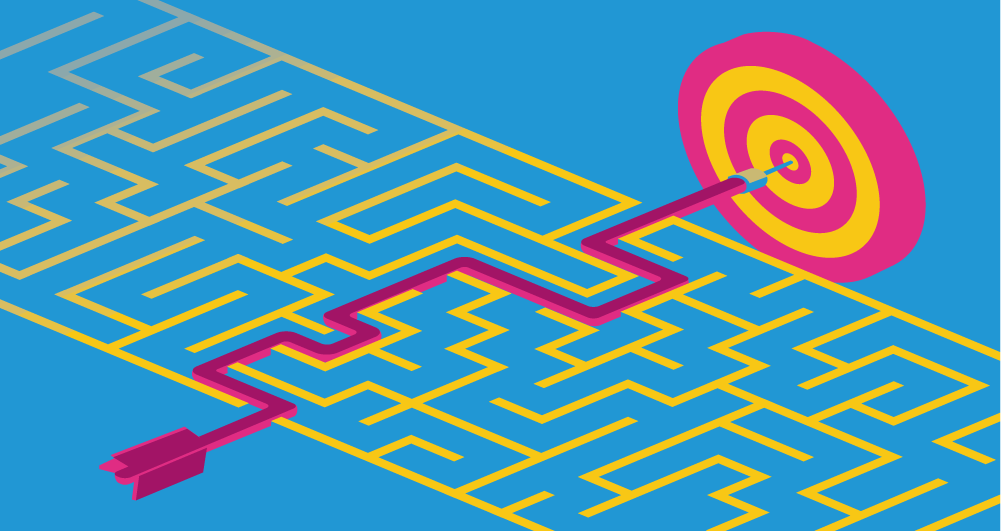How ROI and ROAS can Impact your Digital Marketing Strategy


When it comes to eCommerce, few metrics are more important than return on investment (ROI). But for digital marketers looking for insights on how to improve their online campaigns, tracking ROI alone may not paint the entire picture.
To gain a more comprehensive understanding of how best to use your ad dollars, you should also track return on ad spend (ROAS).Let’s explore what these two metrics are, how each is calculated, and how they can be used together to more strategically assess your performance and adapt your marketing campaigns.
The difference between ROI and ROAS
One of the more common mistakes marketers make when it comes to tracking ad performance is treating ROI and ROAS as interchangeable. In fact, these two metrics measure different things.
ROI is the ratio between your net income and your total investment, while ROAS determines the revenue earned for every dollar spent on advertising.
In other words, ROAS asks: How many sales dollars does one advertising dollar generate for your business?
To calculate ROI, you subtract the initial cost of an investment from its ultimate value, then divide this figure by your total cost. Finally, you multiply the result by 100 to express the final figure as a percentage.
While the similarity of these equations might support the idea that ROI and ROAS are comparable, they actually illuminate different aspects of your digital marketing strategy.
ROI is best used to get a general understanding of a campaign’s success and how it will impact your profits in the long term.
ROAS yields a more immediate, short-term view of how distinct ads or campaigns are performing.
Identifying the ideal ROI or ROAS
Here’s where it gets more complicated. While aiming for a ROAS of 400% or higher and an ROI of 10% or higher is considered good practice, the ideal number will vary from business to business and depend heavily on the market and your unique profit margins.
Rather than focusing on an ideal percentage for either ROI or ROAS, your organization can benefit from tracking how each relates to and impacts different campaign goals.
This will help strengthen your marketing strategy in areas like target setting, segmentation, and more.
The benefits of tracking ROI and ROAS
-
More actionable insights
By tracking both ROI and ROAS, you can see how individual campaigns are impacting your bottom line and adjust accordingly. For example, you can choose to reduce ad spend on products with low engagement and reallocate those funds to higher-performing items. -
Strategically segmented campaigns
Monitoring ROI and ROAS will allow you to be more intentional about how you execute your marketing plans and diversify how you scale your campaigns. Rather than investing ad dollars solely based on intuition, you can segment your products or services based on how much revenue they generate and customize your strategy for each item or category. -
Opportunities to build conversion revenue
Counterintuitively, a higher ROAS isn’t always better. In certain situations, you might want to incur a lower ROAS to increase the converted value or revenue from ads. The table below illustrates how a higher ad spend can lead to a lower ROAS but ultimately produce more revenue.
- Better evaluation models
By factoring in CLV, you gain a better perspective on the ROI range you can expect, which in turn helps you decide on the ROAS you’re comfortable with. For instance, services with subscription pricing models tend to require lower initial ROAS targets, because they generate a higher CLV. On the other hand, luxury goods demand higher upfront ROAS targets, because their CLV potential is ultimately lower.
How ROI and ROAS elevate your marketing strategy
For practical examples of how ROI and ROAS work together to inform successful marketing strategies, consider two of Channable’s customers.
For instance, Toppy uses integrated metric tracking to implement their innovative marketing plans.
Toppy‘s business model is highly seasonal. Using Channable’s fully integrated product suite, they track both their ROI and ROAS to analyze conversions and compare sales across different time frames.
This allows them to recalibrate their ROAS targets to offset any seasonal dips in revenue.
Similarly, Suitable, a longstanding merchant of sustainable quality menswear, calculates their ROI and ROAS across multiple points of sale and automatically aggregate all of that data into a single sales metric.
They can then make quicker, more informed decisions about where their digital ad dollars go.
This is where the value of tracking these metrics really lies. It’s not all about achieving a fixed, ideal ratio of ROI or ROAS, but being able to modify your strategy quickly and effectively to meet the evolving dynamics of today’s eCommerce marketplaces.
The bottom line
ROI and ROAS aren’t interchangeable, but they can work together to help you build more powerful, productive, and personalized digital marketing campaigns.
By considering these two metrics in tandem, you’ll not only get a more holistic view of your ad performance, you’ll be able to tailor your ad spend to your—and your customers’—specific needs.
Discover the value of ROI and ROAS with Channable
Check out integrated, customizable Insights & Analytics tools, and learn how you can empower your eCommerce growth through smarter, data-driven marketing.
Or sign up for a free account to explore Channable's solutions and chat with an expert digital marketing professional today.
Want more like this?
Want more like this?
Insight delivered to your inbox
Keep up to date with our free email. Hand picked whitepapers and posts from our blog, as well as exclusive videos and webinar invitations keep our Users one step ahead.
By clicking 'SIGN UP', you agree to our Terms of Use and Privacy Policy


By clicking 'SIGN UP', you agree to our Terms of Use and Privacy Policy
Other content you may be interested in
Categories
Categories
Categories

Want more like this?


Want more like this?
Insight delivered to your inbox
Keep up to date with our free email. Hand picked whitepapers and posts from our blog, as well as exclusive videos and webinar invitations keep our Users one step ahead.
By clicking 'SIGN UP', you agree to our Terms of Use and Privacy Policy













